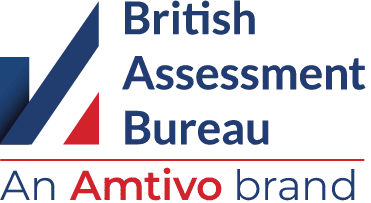As more organisations begin to focus on their environmental impact, it is important to consider what approaches may support your organisation in aligning with environmental laws and standards now and in the future. This is where sustainable resource management comes into play.
Understanding Sustainable Resource Management
Sustainable resource management involves managing resources with the future in mind. It refers to the application of sustainable practices across an organisation to manage resource use responsibly, so that resources remain available for future generations.
The two key aspects of sustainable resource management are understanding how your organisation uses resources and assessing how sustainable they are.
For example, switching to renewable natural resources can support environmental goals.
While this could require significant investment initially, an increasing awareness of environmental impacts and updates to UK regulations highlights the importance for organisations to adopt sustainable practices.
Embracing these practices could lead to benefits like cost savings from energy efficiency, improved brand reputation, and compliance with legal requirements.
Sustainable resource management could also include social factors such as operating fair labour practices and encouraging a positive community impact, which means a broader and more holistic approach to sustainability.
It allows you to put in place policies and procedures that can be followed for years to come – applying circular economy principles, such as reducing waste, reusing materials, and designing for product longevity, can be key.
Sustainable Resource Examples
Sustainable resources are classified as natural resources that are renewable and can be replenished at the same rate, or faster than they are being consumed.
Some examples include:
- Hydropower: Hydropower generates electricity directly by using flowing water to turn turbines. This electricity is renewable and sustainable when managed to protect aquatic ecosystems and water quality.
- Solar power: This is classed as a sustainable resource because the sun’s energy can be captured without the depletion of the sun itself.
- Wind power: Like solar power, wind power can be harnessed through the use of wind turbines, without its depletion.
- Green hydrogen: An energy carrier produced from sustainable sources such as wind or solar power, to split water into hydrogen and oxygen. This process creates a low-carbon fuel that stores energy and can power industries and transport sectors where direct electrification is difficult. It also offers a way to store surplus renewable energy for use when demand is high or supply is low.
Sustainable resources such as these are increasingly valued in light of the UK government’s sustainability plans, including the Clean Power 2030 Action Plan and its Net Zero Strategy.
According to the 2025 UK Net Zero Business Census, 73% of UK organisations are prioritising net zero (despite over half facing barriers), with 65% aiming to achieve this by 2050.
However, not every renewable, natural resource is always sustainable or better for the environment.
For example, while biofuel is a renewable energy source, its production and use can involve greenhouse gas emissions and significant resource consumption, meaning it is not always guaranteed to be fully sustainable. Nevertheless, biofuel continues to play a role in the transition to greener energy sources.
Although exact figures for UK organisations using renewable energy are not available, over 50% of the UK’s electricity was generated renewably in 2024, indicating that many organisations are likely contributing to this transition.
Benefits of Sustainable Resource Management
Achieving sustainable resource management could offer a range of benefits to your organisation, including:
Improved reputation
Demonstrating a commitment to sustainable resource management could help position your business within the sustainability movement, strengthening brand reputation and client and stakeholder loyalty.
For example, some global brands have gained recognition for their significant sustainability efforts, including the use of recycled materials and support for environmental causes.
Stronger competitor advantage
Having clear sustainability practices not only demonstrates your organisation’s commitment to reducing environmental impact, but also strengthens your competitive edge by building trust, loyalty, and preference among customers and stakeholders.
It could also open new avenues to explore, such as working with other environmentally conscious organisations whose business might otherwise be off-limits to those who do not follow similar standards.
Building relationships with other sustainability-focused organisations can strengthen customer trust and create opportunities to share ideas and inspire new approaches to sustainable practice.
Win more business
Highlighting your organisation’s sustainable resource management efforts could help to build trust with clients and stakeholders, and support your organisation’s commercial positioning.
It could make your organisation more appealing to potential clients and stakeholders, as it demonstrates a commitment to supporting a sustainable future.
In some cases, contracts or business opportunities may only be won if you have demonstrable sustainable practices, such as ISO 14001 certification or clear and accessible reporting.
Showing that sustainability is at the forefront of your business can encourage those with similar standards to work with you, rather than a competitor who may not hold the same environmentally friendly standards.
Cost-effective
Using renewable resources can help your organisation to manage costs over time.
By installing your own ways of capturing renewable energy, like solar panels, on your organisation’s premises, you’re able to capture and use your own energy, rather than paying other organisations that supply it.
With energy prices increasing, using your own renewable energy resources may help you to cover a significant portion of your energy bills, saving your organisation money over time that could then be invested elsewhere.
Investing in generating renewable energy could also create opportunities to generate revenue. The UK government’s Smart Export Guarantee (SEG) allows businesses to feed surplus energy they make into the National Grid and be paid per unit.
Reduce waste
Starting off small can help set the ball rolling when it comes to being sustainable in the long term.
While large-scale renewable energy initiatives show your commitment to sustainability, smaller actions – like introducing recycling bins, promoting cycle-to-work schemes, and reducing waste – demonstrate that environmental awareness is part of your everyday culture.
How To Achieve Sustainable Resource Management
Developing a sustainability policy can be an effective first step. This enables your organisation to identify key areas for improvement and set clear objectives to support more sustainable operations.
Your sustainability policy could be strengthened by becoming ISO 14001 certified.
ISO 14001 is the international standard for Environmental Management Systems. Achieving ISO 14001 certification supports organisations in implementing and maintaining policies and procedures for managing environmental responsibilities. This demonstrates your commitment to understanding and continually improving your environmental impact.
Getting started with ISO 14001 certification doesn’t have to be complicated – our Ultimate Guide to ISO 14001 could help you decide whether this certification is the right next step for your business.
We have also outlined the requirements for ISO 14001 certification, helping you to fully understand what the process entails.
Achieving ISO 14001 certification demonstrates to your customers and stakeholders that your organisation is committed to environmental responsibility, investing in a more sustainable future, and upholding your commitments.
Request a free quote and start your ISO 14001 certification journey today.


